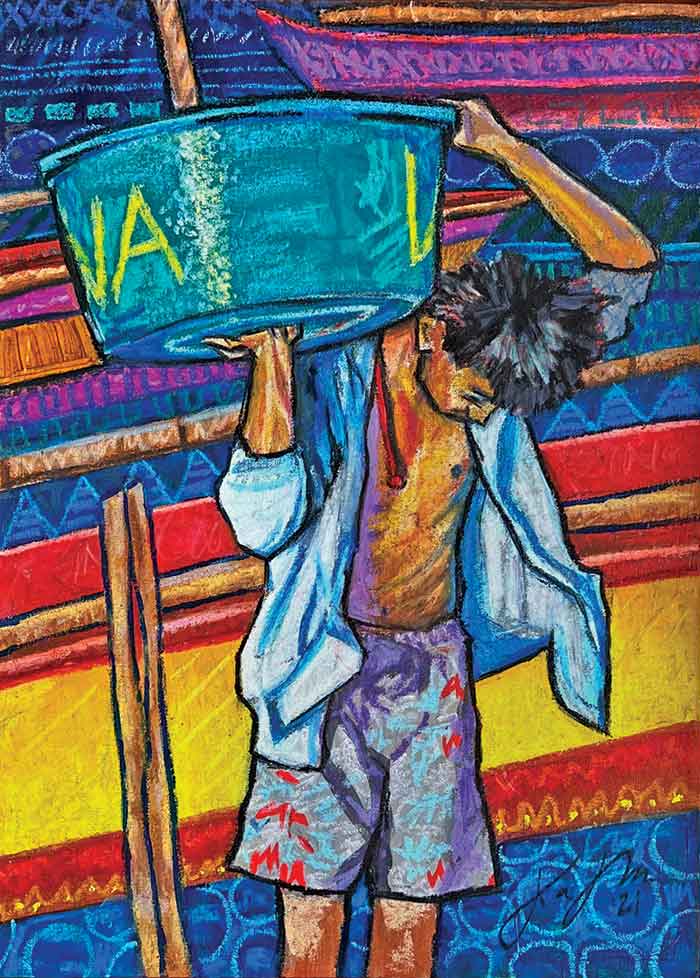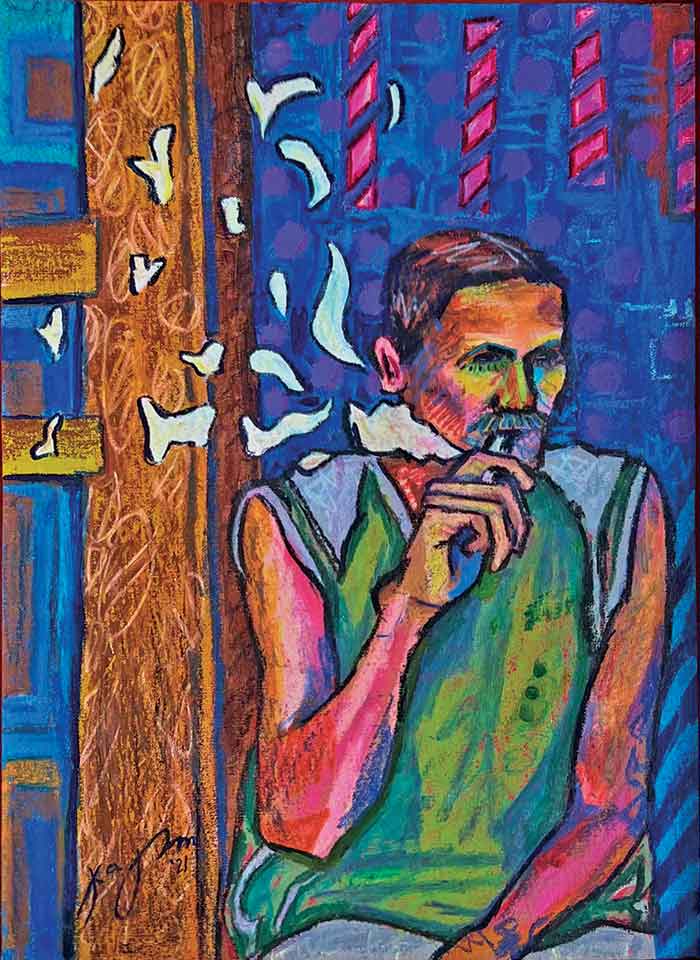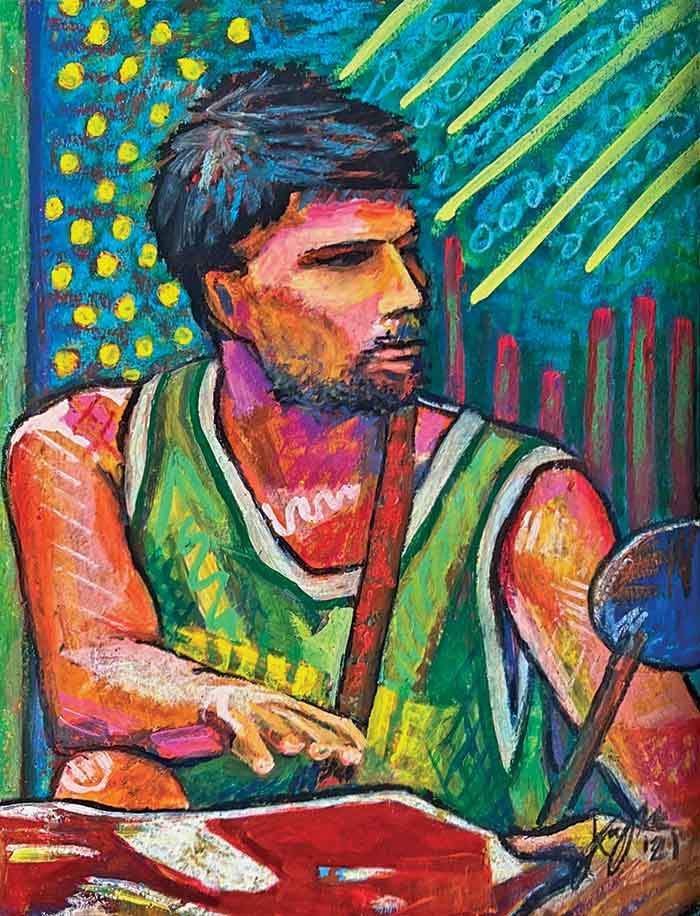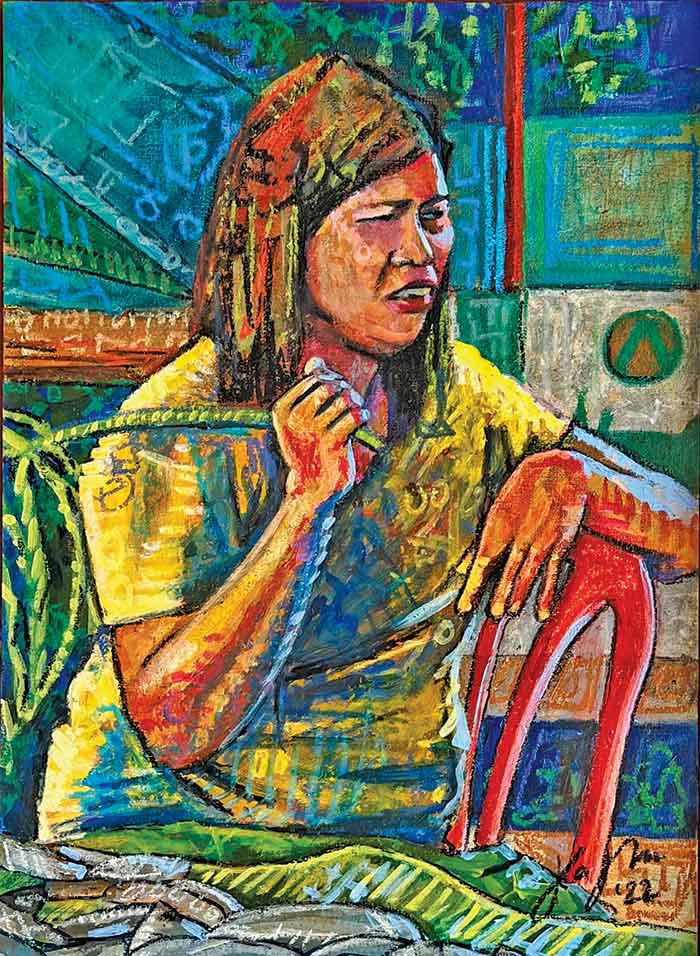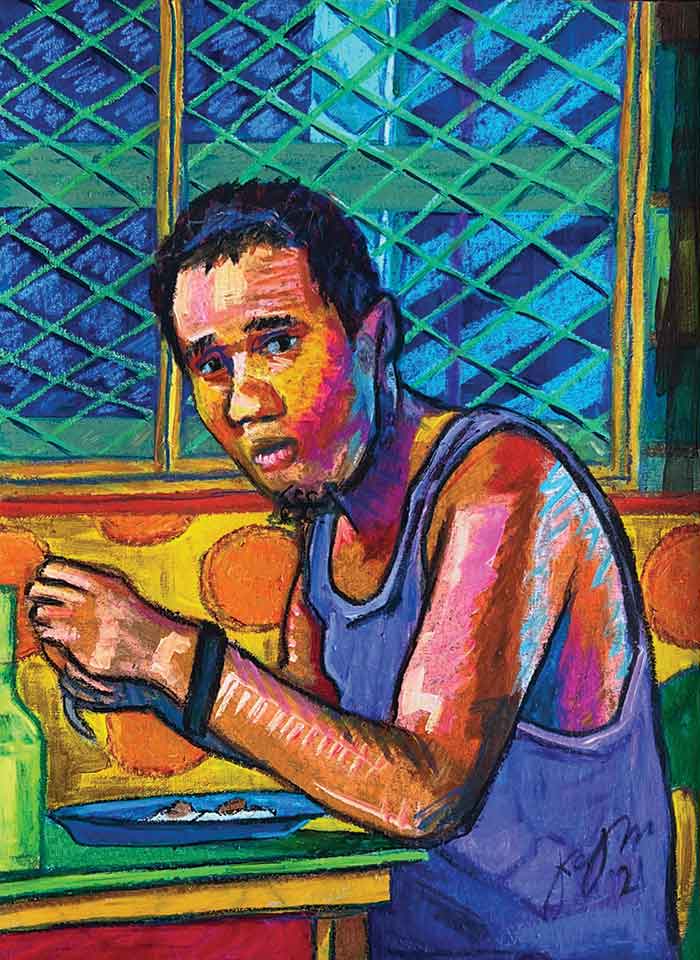By Martin Genodepa
“Blessed are they who see beautiful things in humble places where other people see nothing.”
Camille Pissarro’s statement could very well apply to the Katelyn Miñoso in her first solo exhibition titled Sa Palibot.
Miñoso is another self-taught Ilonggo painter. She won the Legacy Minor Prize in the Philippine Quincentennial Art Competition and was 7th Place in Shell’s 54th National Student Art Competition.
Sa Palibot, on-going in Madge Café at Lapaz Public Market, presents Miñoso’s portraits of ordinary folks.
The mixed media works may be small but the young woman artist’s personal and expressive use of colors can be delightful if not potent. Overlapping deep reds, blues, yellows, greens are nearly screaming as they merge and give form to the stylized portraits of the hoi polloi that have inspired Miñoso.
While one is apt to dismiss Miñoso works in this exhibit as just another fauvist art, they are not without an added value. For the artist, the surge and splashes of colors are symbolic of the vibrancy and liveliness of local life and culture that surround her and that she has become cognizant of.
The tricycle driver, the weaver, the street food vendor, the fisherman, the fish porter, the carinderia customer and different types of do-nothings are among the subjects of these series of portraits. For one who lives a relatively comfortable life, her choice reveals Miñoso’s emerging sentience as well as her percipience to the uniqueness and nuanced comportment of the people she encounters. Her paintings are not poverty porn but are just another attempt at grasping instances of her awakening after observing mundane characters.
The portraits depict mental states and attitudes that are at times raw, at other times subtle, but all quite emotive, all very human, and very Filipino in their piquancy.
The mestizo tricycle driver looks self-satisfied in Hari ng Kalsada. The bearded man tilts his head in reverie in Panilag. The smoker seems absorbed in his activity and in deep thought in Gapanigarilyo. The young fisherman and the fish porter bear the drudgery of their livelihood albeit exuding some amount of resignation in Pagbutlak sang Adlaw and Gakarga Bisya respectively. The woman fish vendor gives the impression that she is bored waiting for customers in Lab-as nga Isda. The weaver appears determined at her craft in Habol. The middle aged man looks amused by some story he hears in Sturya-sturya while the carinderia customer is annoyed at having been distracted from his meal in Pamahaw sa Tinda.
Because the titles hint at the activity that the subjects were engaged in when the artist chanced on (or photographed) them, they could be good clues to examine how their portrayal had been shaped by their circumstances. They could also be the bases of the viewer’s appreciation of the portraits as works of art and, perhaps, even be the keys to develop empathy for the subjects.
At the outset, the delicacy of the expressions of the subjects in these portraits may escape the viewer. This is because the artist employed design elements that are reminiscent of buntings and banners during fiestas and filled each pictorial field with them. Yet the festive setting or background, at the same time, is quite a clever visual device that can be read as a proposition – in the flurry of life and of everyday business, in the helter-skelter, one will likely miss the distinctive qualities inherent in all human beings especially of those who live in anonymity, poverty or squalor.
That Miñoso chose to exhibit in a coffee shop in the middle of a public market is another statement even as it is also a stunt.
To get to and out of the venue one weaves through a colorful display of fruits, vegetables and products and sees all sorts of vendors in all kinds of expressions. This is akin to reliving or reenacting the artist’s experience in finding her subjects.
At the venue, one may immediately be disappointed at the dismal presentation of the paintings that have been overwhelmed by the kitschy decors of the coffee shop. But if one is deeply interested in art and zeroes in only on the small but charming paintings by Miñoso, the unsuitability of the place fades and becomes superficial if not altogether forgotten. It is like finding nuggets in the most unlikely of places.


















